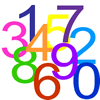Skip over navigation

Charlie's Delightful Machine
Factors and Multiples Chain
Always a Multiple?
How to Solve Equations

Or search by topic
Number and algebra
Geometry and measure
Probability and statistics
Working mathematically
Advanced mathematics
For younger learners
Exploring Our Number System

Exploring our Number System
Simple ideas, like adding together two odds to make an even, can lead to fascinating insights with important real world applications.
In this feature, we have chosen some resources from the Exploring Our Number System pathway on wild.maths.org.
Here's how you can send your solutions to these problems.
In this feature, we have chosen some resources from the Exploring Our Number System pathway on wild.maths.org.
Here's how you can send your solutions to these problems.
Charlie's Delightful Machine Age 11 to 16
Age 11 to 16
Factors and Multiples Chain Age 11 to 16
Age 11 to 16
Always a Multiple? Age 11 to 16
Age 11 to 16
How to Solve Equations Age 11 to 16
Age 11 to 16
You may also like
Patterns in Number Sequences
These resources are designed to get you thinking about number sequences and patterns.

